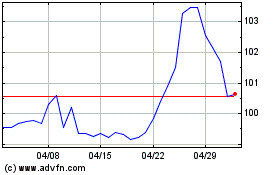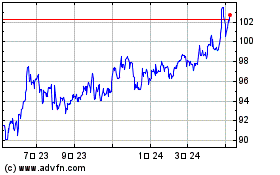Yen Rebounds After Ishiba Wins LDP Presidential Election
2024年9月27日 - 5:02PM
RTTF2
The Japanese yen rebounded from early weakness against other
major currencies in the European session on Friday, after Shigeru
Ishiba has won the leadership race to become Japan's prime
minister.
Former defense minister Shigeru Ishiba won the Liberal
Democratic Party leadership contest, which positions him to become
Japan's next prime minister. Ishiba's victory paved the way for
more rate hikes and surprised markets that had anticipated a
Takaichi victory.
European stocks traded higher amid renewed optimism over China's
stimulus moves, and on expectations of more interest-rate cuts by
the Fed and other central banks.
Investors are also digesting the latest batch of economic data,
and await some key reports from the U.S.
In economic news, overall consumer prices in the Tokyo region of
Japan were up 2.2 percent on year in September, the Ministry of
Internal Affairs and Communications said on Friday. That was in
line with forecasts and was down from 2.6 percent in August. Core
CPI, which excludes the volatile costs of food, rose an annual 2.0
percent - again matching expectations and slowing from 2.4 percent
in the previous month.
Data from the Cabinet Office showed that Japan's leading index
increased less than initially estimated in July from a 7-month low
in June. The leading index, which measures future economic
activity, rose to 109.3 in July from 109.1 in the previous month.
In the flash report, the score was 109.5.
Meanwhile, the coincident index rose to 117.2 in July from 114.1
a month ago. The latest reading was revised up from 117.1. The
coincident index measures the current economic situation.
In the Asian trading today, the safe-haven yen fell against its
major counterparts as traders started speculating the Japan's New
Prime Minister to be decided by the Liberal Democratic Party's
presidential election.
Speculations of political pressure on monetary policy paved the
way for traders to bet on the election results.
In the European trading now, the yen rose to 1-week highs of
159.02 against the euro and 142.78 against the U.S. dollar, from an
early 1-1/2-month low of 163.50 and 146.49, respectively. If the
yen extends its uptrend, it is likely to find resistance around
155.00 against the euro and 140.00 against the greenback.
Against the pound and the Swiss franc, the yen advanced to 4-day
highs of 191.01 and 168.68 from an early near 2-month low of 195.96
and more than a 3-week low of 172.53, respectively. The yen is
likely to find resistance around 182.00 against the pound and
165.00 against the franc.
Against the Australia and the New Zealand dollars, the yen
climbed to 3-day highs of 98.28 and 90.06 from an early near
2-month low of 100.72and 92.29, respectively. The next possible
upside resistance levels for the yen are seen around 96.00 against
the aussie and 87.00 against the kiwi.
The yen jumped to a 4-day high of 105.87 against the Canadian
dollar, from more than a 3-week low of 108.56. On the upside,
102.00 is seen as the next resistance level for the yen.
Looking ahead, Canada GDP data for July, U.S. personal income
and spending data for August, goods trade balance for August, PCE
price index for August, retail an wholesale inventories for August,
U.S. University of Michigan's consumer sentiment for September,
Canada budget balance for July and U.S. Baker Hughes weekly oil rig
count data are slated for release in the New York session.
AUD vs Yen (FX:AUDJPY)
FXチャート
から 10 2024 まで 11 2024

AUD vs Yen (FX:AUDJPY)
FXチャート
から 11 2023 まで 11 2024
